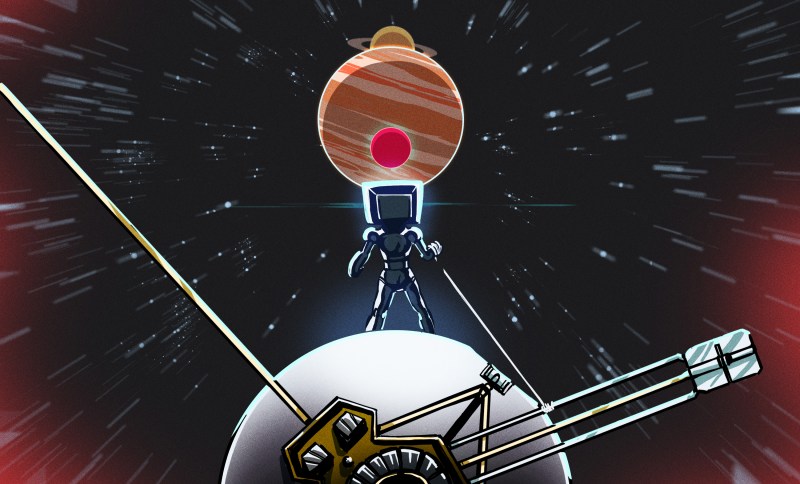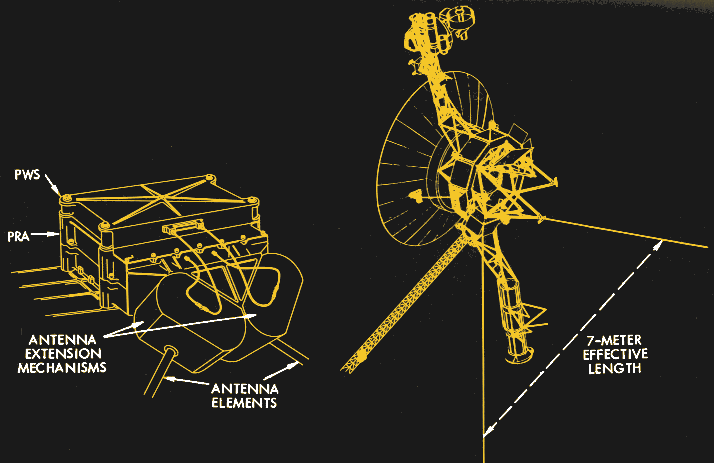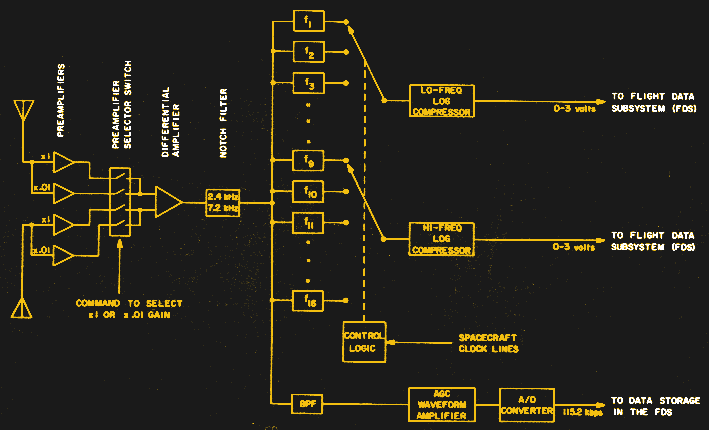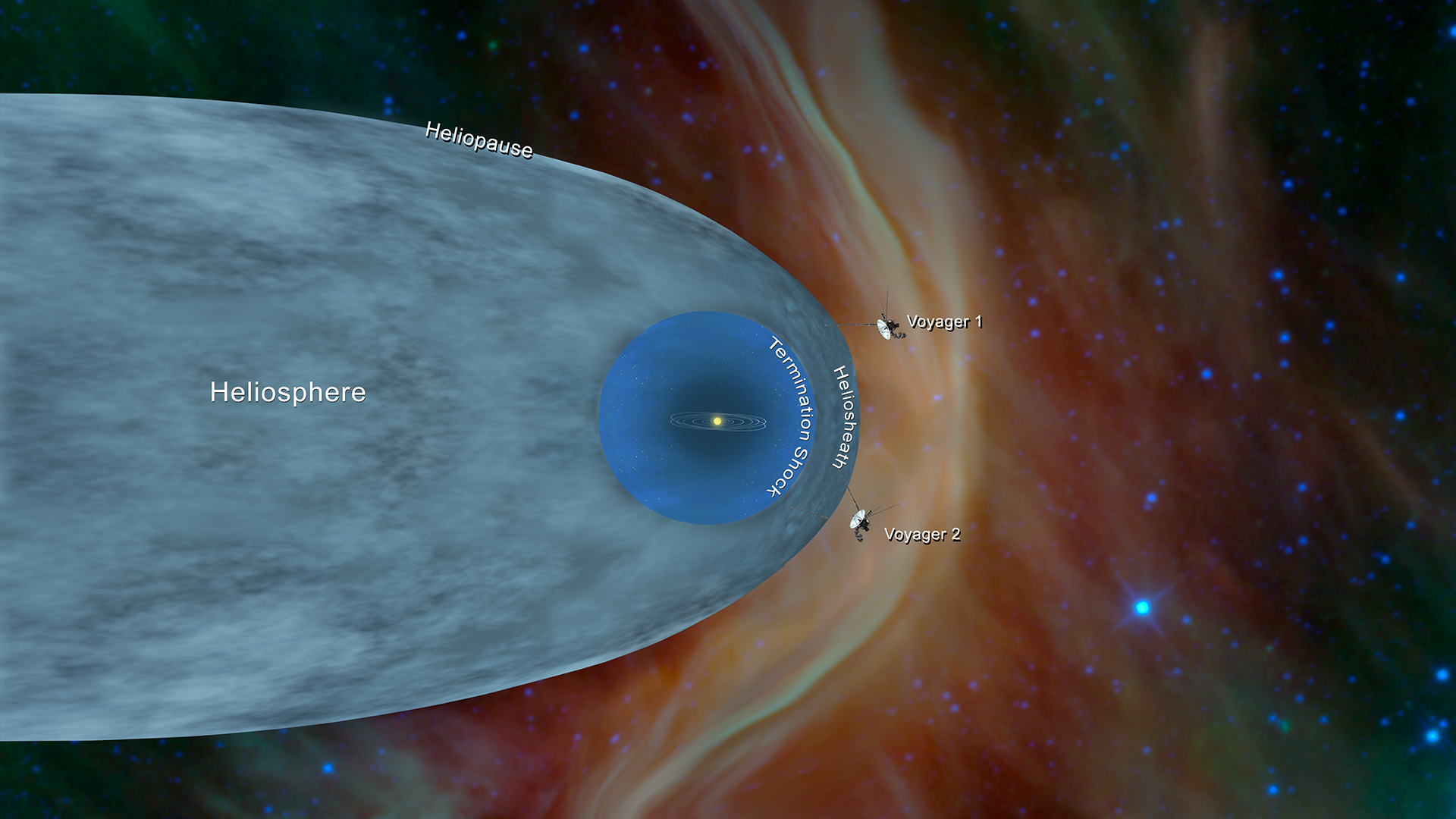
NASA is always keen to highlight the space agency’s many successes, and rightly so — those who pay for these expensive projects have a right to know what they’re getting for their money. And so the news was recently sprinkled with stories of the discovery of electron bursts beyond the edge of our solar system, caused by shock waves from coronal mass ejection (CME) from our Sun reflecting and accelerating electrons in interstellar plasmas. It’s a novel mechanism and an exciting discovery that changes a lot of assumptions about what happens out in the lonely space outside of the Sun’s influence.
The recent discovery is impressive in its own right, but it’s even more stunning when you dig into the details of how it was made: by the 43-year-old Voyager spacecraft, each now about 17 light-hours away from Earth, and each carrying an instrument so simple and efficient that they’re still working all after this time — and which very nearly were left out of the mission’s science payload.
NICE WORK IF YOU CAN GET IT

The instrument that made the discovery, the Plasma Wave Subsystem (PWS), can trace its lineage back at least as far as 1958. That’s when Donald Gurnett, an electrical engineering freshman at the University of Iowa, took a job in the lab of Dr. James Van Allen, who had recently discovered the radiation belts surrounding Earth that now bear his name. Van Allen and his team had used a special Geiger counter on Explorer 1, the first satellite flown by the United States, and the results were both exciting and foreboding. It was clear that Earth was surrounded by high-energy charged particles, which was a truly new discovery, but it also meant traveling in space may well be lethal. Moritz recently published a deeper dive into that topic.
More information was needed, so Van Allen set Gurnett to work on instruments for future satellites to explore the environment close to Earth. The team at the University of Iowa came up with innovative digital telemetry systems to replace the simple analog telemetry links used by Explorer 1 and other early satellites. They also devised a series of space radio and plasma wave experiments, in part to explore natural very-low-frequency (VLF) phenomena known as sferics, like whistlers and the “dawn chorus”. The experiments flew on satellite Injun-3 in 1962 and beamed back enough data for Gurnett to build his Ph.D. thesis on.
The lessons learned with these early experiments boosted the nascent field of space radio and plasma wave research and informed the construction of better instruments, which were flown on multiple missions through the 1960s and early 1970s. By then, NASA was deep in the planning stages for the Voyager missions, designed to take advantage of a rare alignment of orbits that would allow a probe to visit the previously unexplored outer reaches of the Solar System with a minimum of maneuvering. Gurnett was among a group of physicists who proposed a plasma wave experiment for Voyager, based mainly on the desire to learn more about the intense radiation belts known to surround Jupiter.
The group’s first proposal for a plasma wave experiment for Voyager was rejected by NASA. It was a bitter disappointment, but the plasma wave community kept after NASA to include some kind of instrument to explore Jupiter’s energetic environment. In 1973, as the clock was ticking to finalize the science payload design for Voyager, Gurnett made a compromise proposal for a plasma wave experiment. The instrument would literally piggyback on an experiment that had already been accepted: the Planetary Radio Astronomy (PRA) experiment. It would share the “rabbit ear” antennas that would be built for the PRA, with a compact spectrum analyzer attached to the enclosure holding the PRA receiver. Mainly on the strength of Gurnett’s proposal, plus the fact that the plasma wave experiment would use only 1.6 Watts of Voyager’s limited power and add only 1.4 kg of mass, NASA accepted the proposal. Soon thereafter, the Plasma Wave Subsystem, which was entirely built at the University of Iowa, was on its way to the outer planets and beyond.
SIMPLE BY DESIGN

That the design of the PWS is so simple is probably the key to its success, and has a lot to do with why it’s still running on both Voyagers almost 50 years after launch. The antennas were designed for the PRA experiment but are adequate for measuring the electrical fields of plasma waves (the rejected original proposal included a magnetometer to allow study of the magnetic components of plasma waves). Each element of the antenna is 10 meters long when deployed, set 90° apart. For the PRA experiment, the antennas act as a pair of monopoles, but for PWS they are connected as a balanced dipole.
Storing and deploying 10-meter-long antenna elements in space requires some clever thinking. The PRA/PWS antenna used basically the same technique employed on IMP-6, a satellite in the early 70s that needed antennas up to 45 meters in length. The Storable Tubular Extendable Members antenna, or STEM, was used for both IMP-6 and, in considerably shortened form, on Voyager. It consisted of a sheet of beryllium copper rolled onto a spool, a drive motor, and a forming die. The copper sheet had been formed into a tube before being rolled flat on the spool, and when extended through the die, snapped back into a rigid tube.

The PWS instrument was also simple by design. Each antenna is connected to a preamplifier with a selectable 40 dB attenuator, to prevent the intense Jovian radiation from swamping the electronics. The output of each preamp feeds into a differential amplifier, whose output is proportional to the voltage difference between the two antennas. This signal is passed through a notch filter to remove noise from Voyager’s 2.4-kHz switching power supply before being fed to a 16-channel spectrum analyzer that covers 10 Hz to 56.2 kHz. The 16 filters in the spectrum analyzer generated output signals from 0 to 3 volts, which are sent to the spacecraft’s Flight Data Subsystem for encoding.

THE LONG DARK
After the long journey past the orbit of Mars and through the asteroid belt, the PWS finally got a chance to prove itself. During the high-speed flybys of each gas giant, calculated to provide a gravitational assist to the next waypoint, the PWS performed a complete scan through all 16 channels every four seconds. The resulting data was stored on the Data Tape Recorder, or DTR, and queued for streaming back to Earth.
Once the Voyager twins had completed their survey of the outer planets in 1989, the Voyager Interstellar Mission began. Planning for the exploration of the lonely black void into which both spacecraft now hurtled had been in the works for quite some time, and it was clear that the PWS would play a major role in whatever discoveries lie ahead. The complex and power-hungry polarimeters, spectrometers, and imaging systems, designed to gather data mainly during planetary encounters, were largely switched off, leaving more power available to the simpler particle detectors and magnetometers, as well as the PWS, to continue exploring the depths of space.

Both Voyagers eventually passed through the boundary where the hot, charged particles streaming out from the Sun, or solar wind, is pushed back by the cooler plasmas of the interstellar medium. The transition through the various layers of rarified plasmas at the edge of the solar system were all noted by PWS data, as was the passage of each spacecraft through the heliopause and into interstellar space, which was marked by a 40-fold increase in plasma density. The PWS was also key to the recent electron-burst discovery.
The Plasma Wave Subsystem, included on the Voyager mission at the last minute, has performed admirably for the last 43 years and has provided us with a detailed picture of what lies at the edge of our solar system. Eventually, and soon now, the plutonium in the Voyager twins’ radioisotope thermal generators will decay to the point where there’s not enough power to keep everything running, but with any luck the Plasma Wave Subsystem will be one of the last instruments to enter its long interstellar sleep.
No comments:
Post a Comment